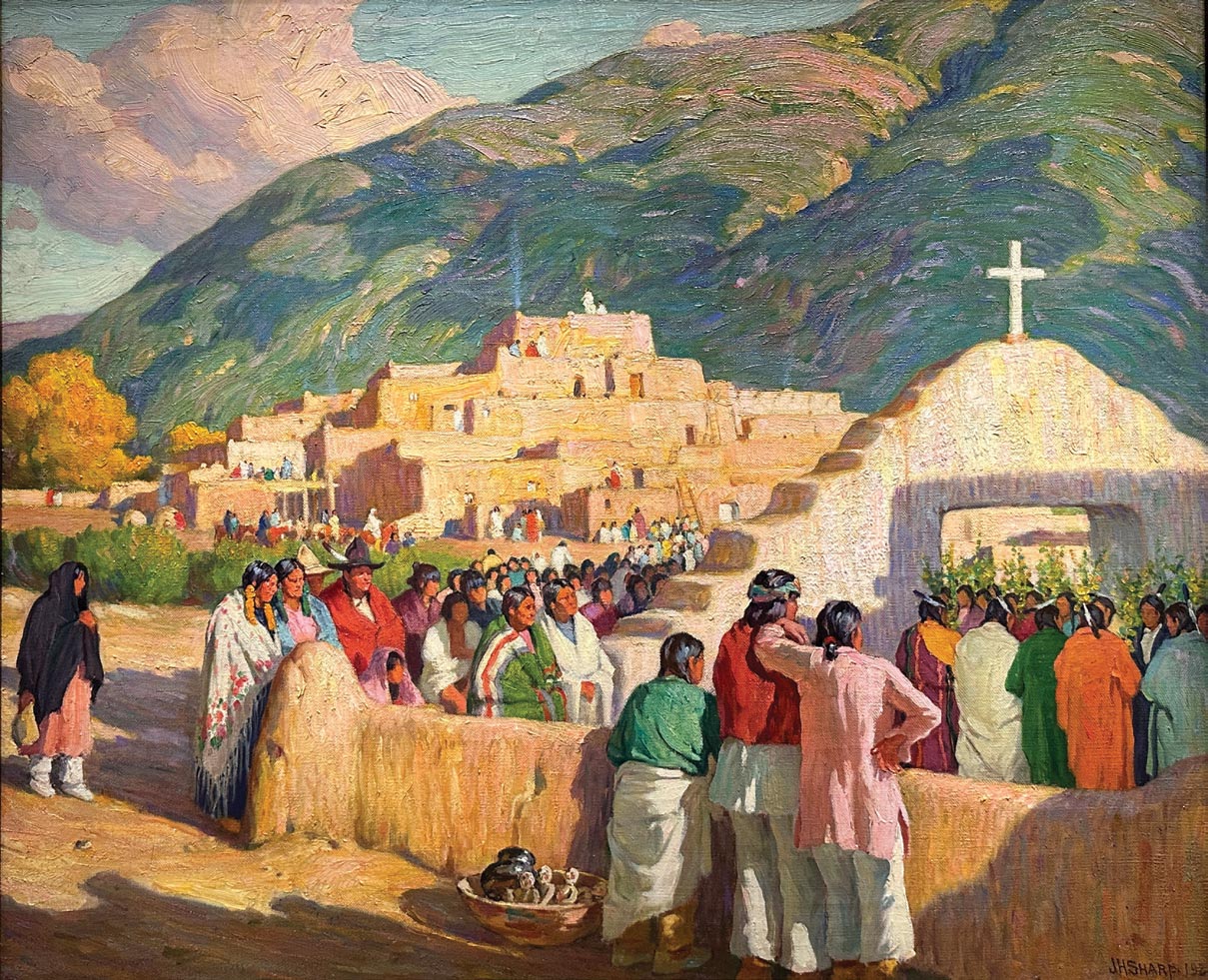
01 May Publisher’s Note: The Father of the Taos Art Colony
Joseph Henry Sharp [1859 – 1953] was one of the most accomplished artists of the 1900s. As a painter, he was an adventurer and storyteller who helped shape the image of the American West.
Often referred to as “the father of the Taos Art Colony,” he influenced the genre of Western art when he regaled his fellow artists at the Académie Julian in Paris with stories of the glories of New Mexico. Just a few years later, in 1898, Ernest Blumenschein and Bert Phillips settled in Taos to paint the great Southwest.
Sharp had deep connections in both Montana and New Mexico. He first went to Montana in 1899, and his resulting portraits of members of the Crow, Sioux, and Nez Perce tribes came to the attention of both President Theodore Roosevelt and Phoebe Hearst, the mother of William Randolph Hearst, who bought 80 paintings and commissioned 75 more. Sharp was immediately financially independent. In 1905, President Theodore Roosevelt commissioned Sharp to paint portraits of Native American survivors of the Battle of the Little Bighorn.
In 1912, Sharp moved to Taos, New Mexico, where he, E. Irving Couse, Herbert “Buck” Dunton, Bert Phillips, Oscar E. Berninghaus, and Ernest Blumenschein founded the Taos Society of Artists. Sharp’s narrative works, such as this one, were among the best produced by the group and demonstrate the reverence Sharp felt for the people he painted. In a 1922 article from El Palacios magazine titled “An Indian Painter in the West,” Laura A. Davies writes, “[Sharp] peers into their hearts. His vivid imagination sees things from their viewpoint. He feels the thrill of things that thrill his subjects, and so he puts the living spirit, not merely the technical exact portrait, upon his canvas.”
Sharp died in Pasadena, California, on August 29, 1953, just a few days before his 94th birthday. Rarely has one man, one artist, had such an impact on so many.
Tim Newton, Publisher
tim@westernartandarchitecture.com






No Comments